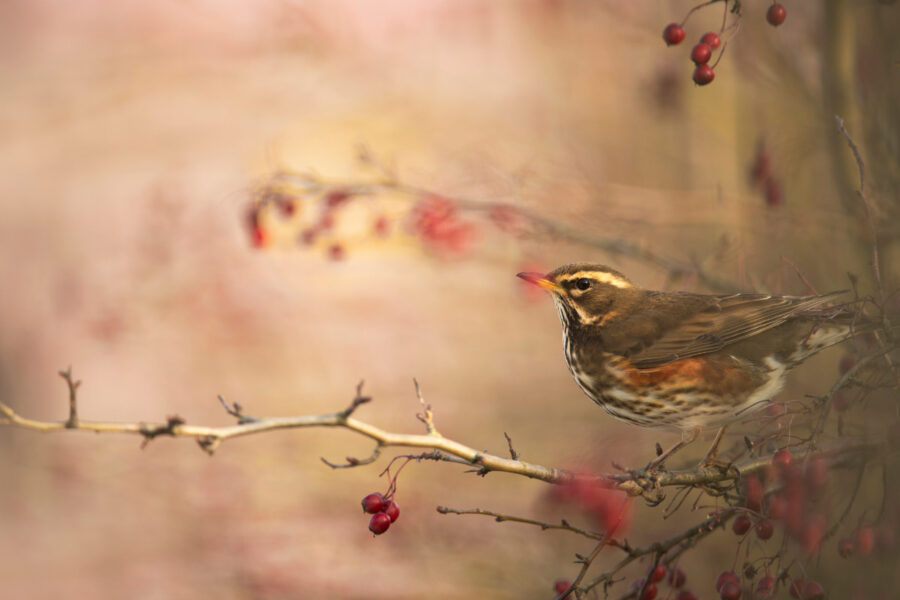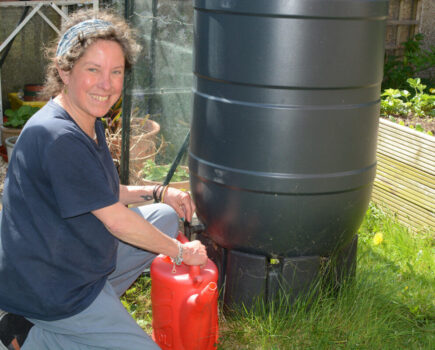If the arrival of swallows earlier in the year signals the coming of summer, then this bird – the redwing – is a sure sign that autumn is here
October Bird of the Month – Redwing
These thrushes generally arrive in the UK from around the end of September into early October, having left their breeding grounds in the forests of Scandinavia and Iceland when temperatures began to fall there. They’ll feed on insects when available, but at this time of year and into winter, will make the most of any fruits and berries around.
They can be drawn to gardens by fallen fruit and you may be lucky enough to see a whole flock of them descend on any windfalls laying among the leaves under apple trees, so be sure to leave a little fruit if you are keen to attract them. Even if you don’t have trees, putting out some halved apples may bring some to your patch.
How to ID Redwing

They are a striking looking bird! Their white speckled breast gives away the fact they’re thrushes – our smallest true thrush in the UK. The real tell is the orangey-red underwing though, which obviously gives them their name. They also have a creamy stripe above their eye.
It is estimated that around 700,000 Redwings winter in the UK, although numbers can change quite a lot from year to year. The best places to spot them are in our countryside, fields and hedgerows though you might also be lucky enough to see some in parks and gardens, where they stay until March or April, when they return to the forests of Northern Europe to begin breeding.
You will often see them in large flocks, often including fieldfares, which are another visiting winter thrush. They fly together and drop down to feed in numbers, which offers them some safety, but despite this they’re still easily disturbed and quick to disperse into nearby trees and cover if startled.
Helping birds in autumn
Things to do in your garden at this time of year to help birds include not being too tidy. Leave some seedheads to be pecked at by Goldfinch, and scrape together some leaf litter to shelter insects, helping out the starlings and blackbirds picking over your lawn.
Autumn is also ideal to plant some spring bulbs. These first flowering plants like snowdrops, grape hyacinth and crocuses will provide nectar for early pollinators, offering a real lifeline as they start to emerge on warmer days.
For more information about helping birds and other wildlife in your garden, visit rspb.org.uk
……………….
Q&A

Q. Why do I see so many groups of birds at this time of year?
A. Birds flock together in the autumn and winter usually for two reasons – for safety in numbers and warmth. Don’t imagine that the flocks you see are all the same birds though – different species often fly together, for the same reasons. You need a good eye to pick out individual species in a flock but it’s a fun way of learning more about birds as you come to recognise them by their size and silhouette as well as their colours!
Q. Where’s a good place to see lots of different birds in October?
A. Coasts and estuaries are great places to spot birds in the autumn, as they have lots of visiting waders and wildfowl who are drawn to their food-rich marshes and mudflats.
Find more tips, advice and articles like this at the Amateur Gardening website. Subscribe to Amateur Gardening magazine now





